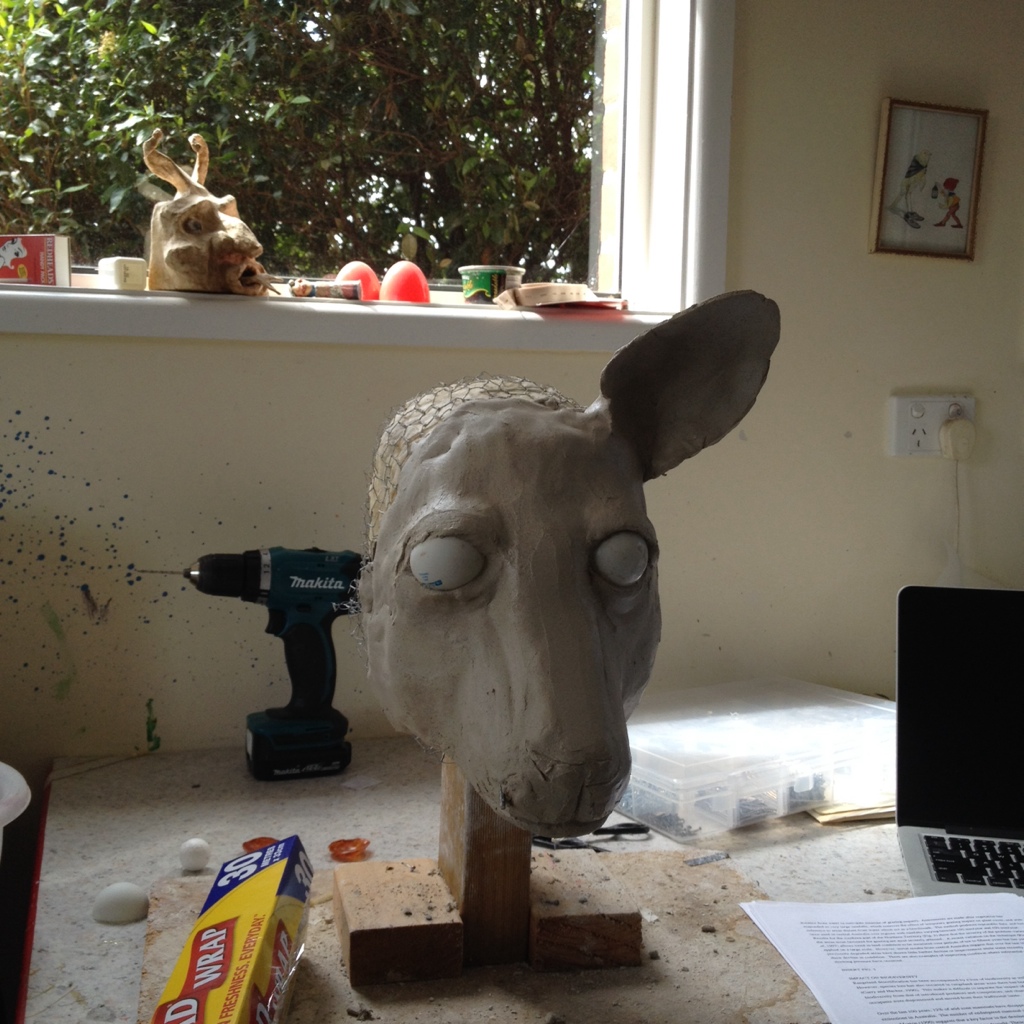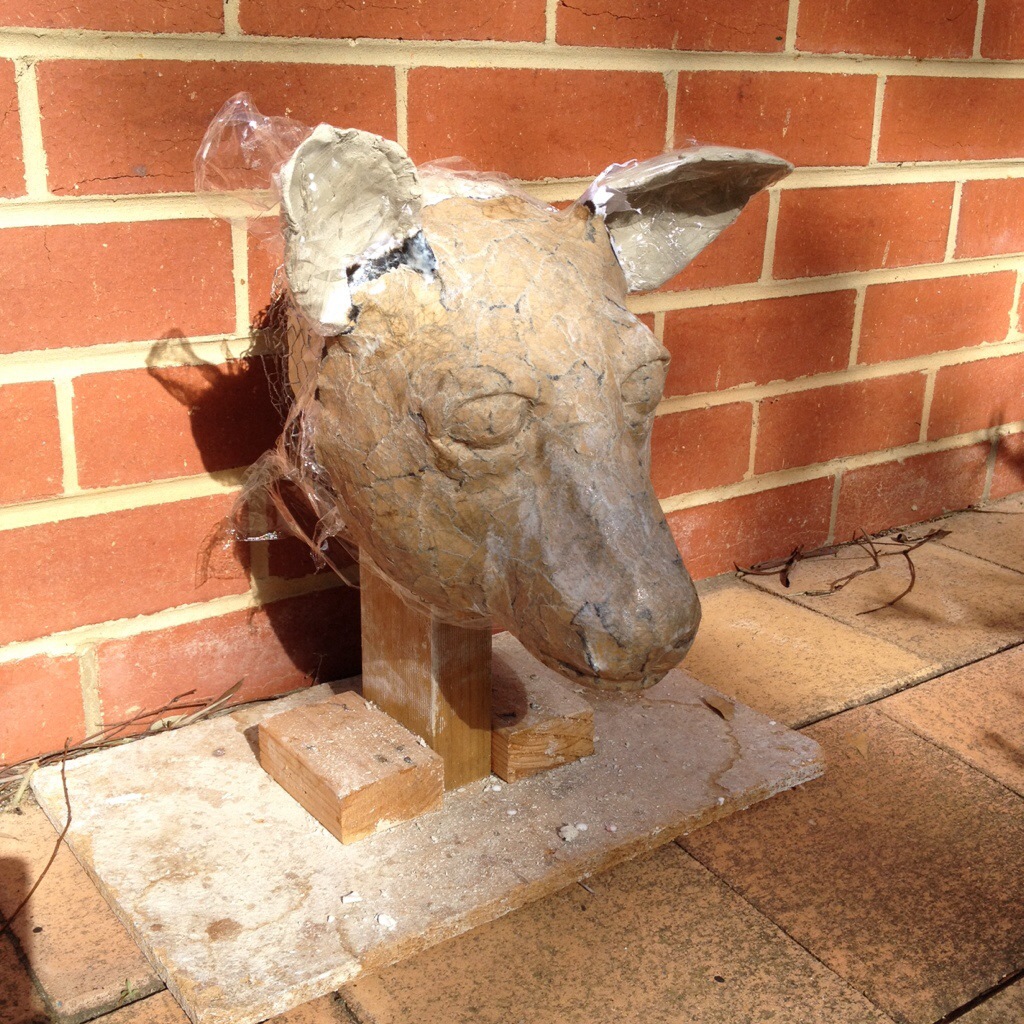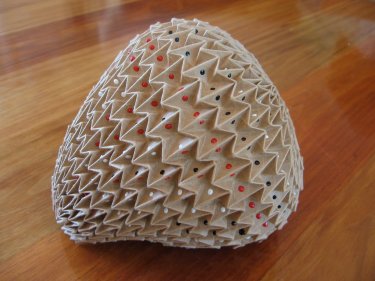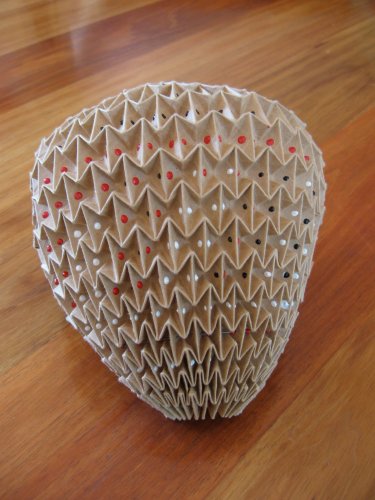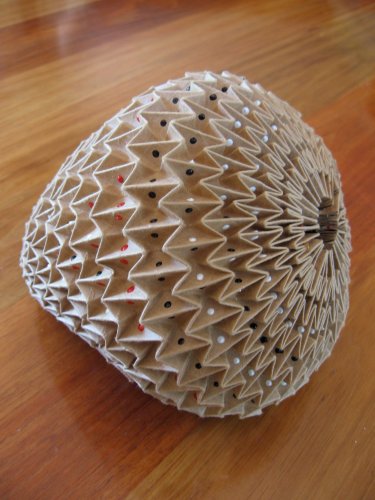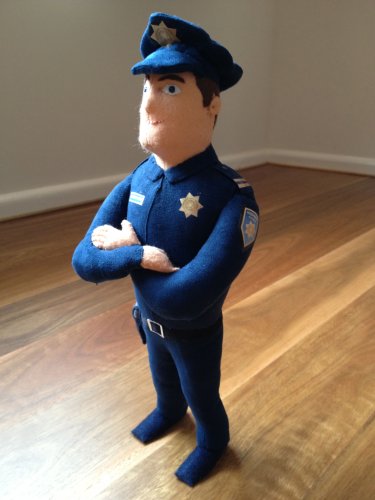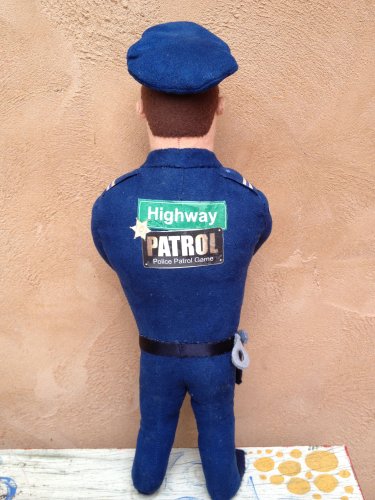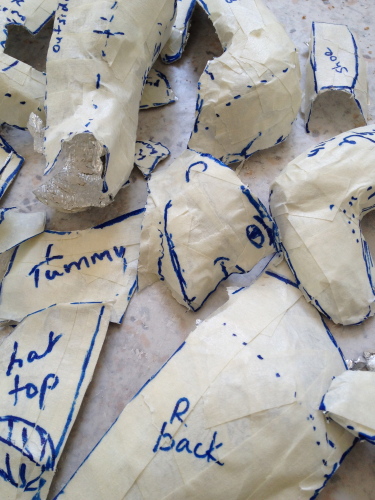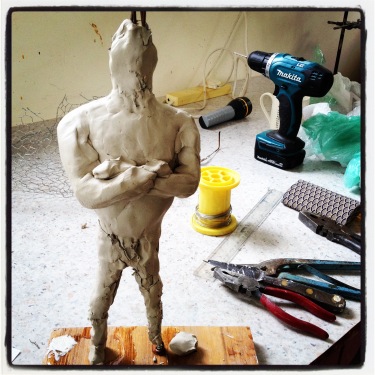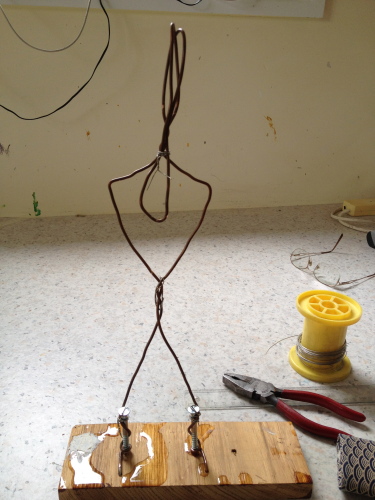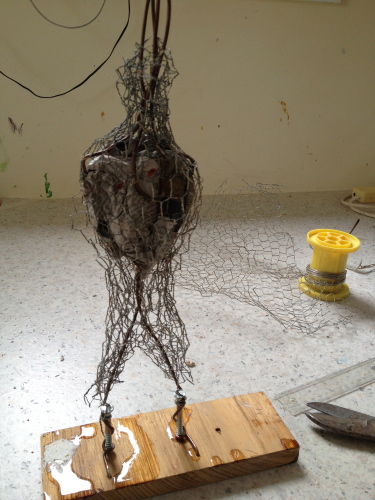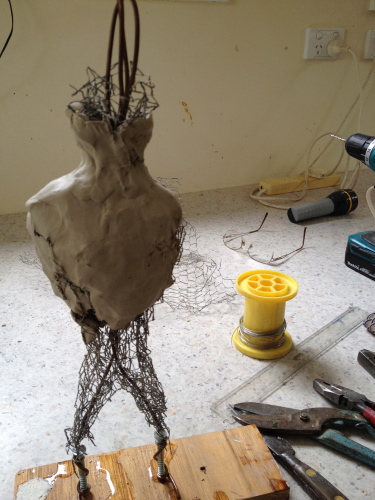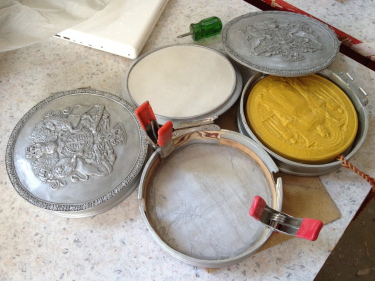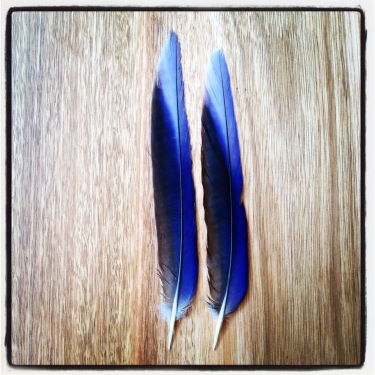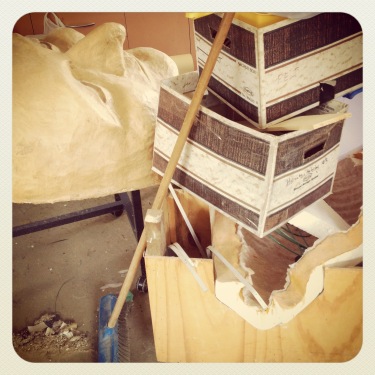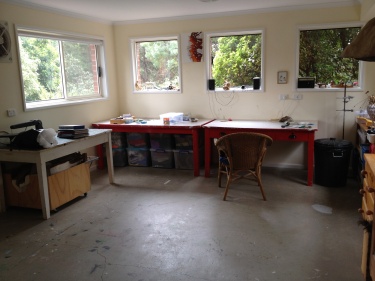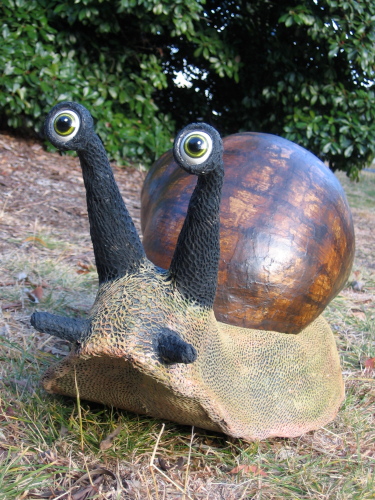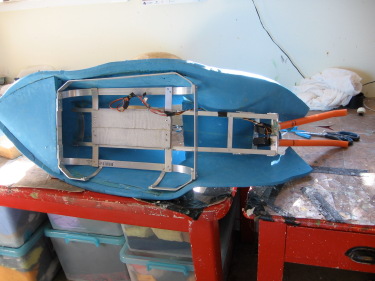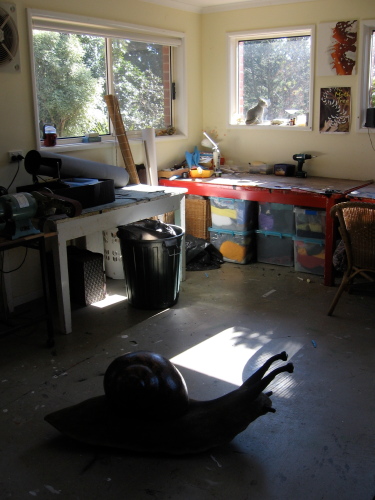Today I’ve been making a kangaroo mask. This is for the Biami production I blogged about yesterday. I decided to use paper mâché even though it’s a little time consuming. For something fairly small like this it’s fine, and I am pretty quick. I like doing paper mâché very much and find it meditative. I’m not sure on the final finish yet – fur or felt?
make
Mechanical cardboard creatures
Lucas Ainsworth & Alyssa Hamel have a Kickstarter appeal going for these cool mechanical creatures made in kit form out of cardboard. The animal moves either with a manual winding mechanism, or by itself if you build in an additional the gear kit.
(via @dugnorth)
An origami shell
Officer Dan softie
The custom softie I was making last week was “Officer Dan”, the face of a new board game called Highway Patrol. He will be part of the game promotion when its inventors travel to the International Toy Trade Show in New York next week.
I’ll post a few more making photo’s in my photoset at Flickr in the next day or two.
Continuing my pattern making
Continuing on with my pattern making, once the clay sculpt is done I cover it first with aluminium foil, and then with masking tape. The foil covers the complex contours easily and stays in place, and the masking tape holds the foil shape together when it comes off the maquette.
I draw cutting lines keeping in mind both where to cut to get the pattern off the model easily, and where seams are going to be best for assembling the final pattern in fabric. I also sometimes mark midlines or possible dart lines that might be useful later.
It’s also good to label the pieces before they are cut off, because they are not alway easy to identify once they are cut up. These are still not 2D; they’ll need to have some further cuts made in them, but I haven’t chosen fabric yet, and if it’s stretchy I may not need as many cuts.
Making a softie pattern
I began a new project yesterday, a commissioned soft plush toy. I can’t disclose exactly what at the moment, but can show some indistinct making shots. A clay maquette is probably a weird way to start a softie, but I find drawing a 2D dressmaking style pattern with darts and tucks difficult. It’s much quicker for me to start with a 3D shape and make a pattern from that.
Here’s the rough wire armature intended to hold the clay up,
followed by chicken wire and some crumpled newspaper to fill out the space.
Then the clay is sculpted on top, embedding in the wire.
Repairs
I ended up making four of these replica skippets some years ago. They are used as hands-on items in school tours, so they have a hard life, and they are back for repair. There is also an intrinsic weakness, since the cast resin lid is heavy in comparison to the slight anchoring available for the hinge. I keep thinking that the ideal solution in future will be 3D scanning and printing in metal.
And this is a photo that I like from yesterday. The blue feathers probably belong to crimson rosellas. Our new floor makes a great background!
And by the way, I support the STOP SOPA protests against internet censorship.
A clean studio to start the year!
I’ve spent some days giving my studio a huge clean-up, including moving and cleaning shelving, washing down the walls, and some reorganising. It took a lot of effort but it feels worthwhile. Apart from anything else, my work often generates a lot of dust and particles that settle everywhere, and although I use safety gear I worry a little about the health risk.
There seems to be so much surface space, though I know it won’t last for long!
Giant remote control snail
This is a giant remote control snail that I recently made for The Fool Factory for their promotion of National Science Week 2011. It’s about a metre long, fitted onto the chassis of a remote control car, and has eyes that move from side to side. It’s made to look somewhat like Australia’s largest land snail, the Giant Panda Snail, which inhabits sub-tropical forests in Queensland.
I’ve posted photos of the making process. The shell is shaped polystyrene layered with paper mache, and then painted. The body is made from thin PE foam sheeting covered by a strange irregular and stretchy netted fabric which I used for the skin texture, then painted. Inside the snail there is a cage that separates and protects the body from remote control chassis, and a small aluminium structure that holds the servo motors that rotate the eyes.
I’m also like the following picture of the snail in my studio, although it reminds me of when we first moved into our house and there was a small crack by the back door where leopard slugs used to come in during the night to eat the cat food in the laundry! Worse was when they used venture further into the house and we could accidentally tread on them barefoot if we were up in the night tending babies – eew!
